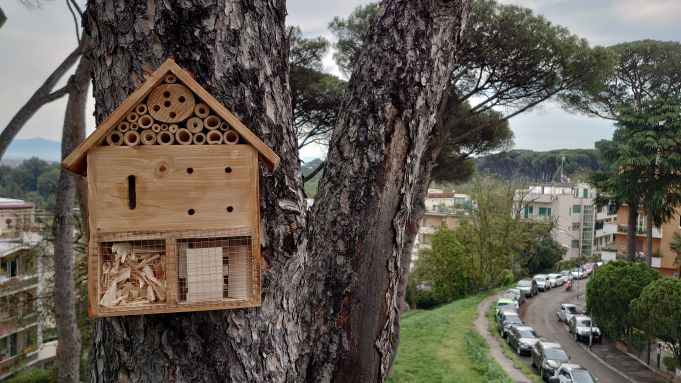Rome turns to ladybirds to save the city's pine trees
Rome seeks ways of stopping a deadly parasite from killing the city's pine trees, including natural methods.
Rome's umbrella pine trees are at serious risk due to a killer parasite - the pine tortoise scale - with efforts gaining pace to save the city's skyline before it is too late.
The Lazio region around Rome recently allocated half a million euro to fund the battle to save the capital's trees from the cochineal insect which arrived in Italy from North America in 2015.
There are also numerous private and public operations underway using both organic and chemical treatments against the sap-eating parasite (toumeyella parvicornis) whose activity can kill trees within two years.
The Coccinella Libera Tutti project aims to fight the pine tortoise scale using ladybirds - coccinelle in Italian - by releasing the colourful insects in various green areas of the capital.
This biological fight against the parasite, which arrived in Rome about three years ago, involves six neighbourhood associations working in collaboration with the city.
Massimo Proietti Rochi, president of the Amici di Villa Leopardi association, told online newspaper RomaToday that on 12 May thousands of ladybirds, or ladybugs, were released in Villa Leopardi, in the Nomentana area, and Parco Mario Riva, in the Parioli district, as well as in Villa Chigi and Villa Pamphilj.
Rino Fabiani, the environment councillor for the city's Municipio II borough where the ladybirds were released, described the insects as both "efficient and economical."
Speaking to RomaToday, Fabiani estimated that using ladybirds to protect the city's pines would cost €1 million a year compared to the €40 million cost of endotherapy methods.

Local municipal authorities used a mobile crane to place the ladybirds, along with little houses, high up on the trees.
"We have raised funds to buy more than 4,000 ladybirds, of five different species," Proietti told RomaToday.
The ladybirds cost between 30 and 80 cent each, Proietti told Rome newspaper Il Messaggero recently, in contrast to the "endotherapy treatments with chemicals which costs around €300 per tree."
What does pine tortoise scale do to pine trees?
The highly-invasive bug feeds off the sap of trees and causes the spread of a sooty black mould, leading to extreme needle loss.
The pine fights back by generating new needles which, in turn, weakens the tree and exposes it to new attacks by the parasite. It is a vicious cycle that – if untreated – can kill the exhausted tree within two years.
How to tell if pines are affected by the parasite
Rome residents may notice unusually heavy carpets of pine needles, covered in sticky honeydew, under the city's pines.
Look up – if the tree's foliage has the appearance of being burnt then it is most likely the victim of the dreaded parasite.

















